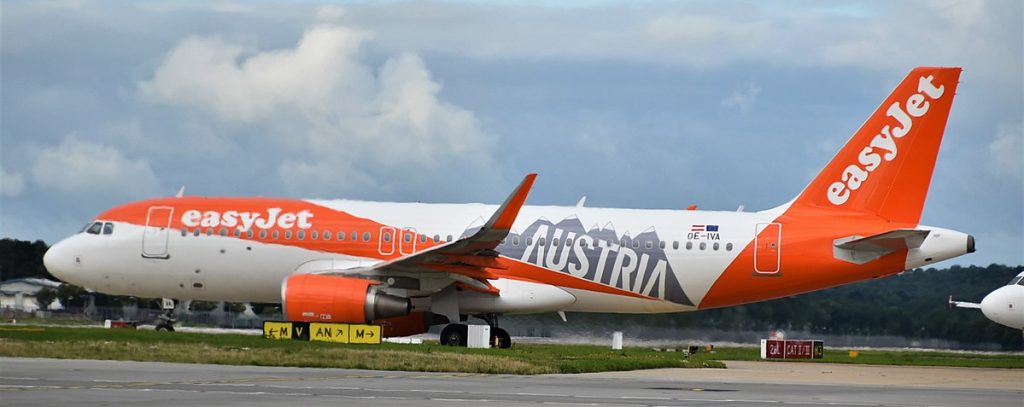With just under two months left before the UK officially withdraws from the European Union, the future for the UK aviation industry, and that of its regulator (the CAA), remains as opaque as ever.
It is no secret that both industry as a whole and the regulator in particular wish the UK to remain a member of the European Aviation Safety Agency (EASA).
Speaking in September 2017, Andrew Haines – then Chief Executive of the CAA – stated: “We at the CAA are very explicit that we want to remain full members of EASA. I have to say in my 8 years in the aviation sector, I don’t think I have ever come across an issue that has such broad consensus in the sector. It’s almost universal. It makes no sense to recreate a national regulator. At best, you replicate the vast majority of European regulation, and you’d have to do it over an extended period of time.”
He added that the CAA was not undertaking any work on the possibility of leaving EASA: “We are very uncompromising in our view that we should not be planning for a new independent aviation safety system in the UK. Indeed, we have consciously decided not to do that work as it would be misleading to suggest that’s a viable option.”
In practice there is no reason for a non-EU state to belong to EASA, and indeed non-EU states such as Iceland, Norway, Switzerland and Liechtenstein are members of EASA.
However, at Government level, so-called ‘red lines’ were being drawn up that stood to make continuing UK membership of EASA problematic. In a speech in early 2017 the UK Prime Minister Theresa May said: “…we will take back control of our laws and bring an end to the jurisdiction of the European Court of Justice in Britain. Leaving the European Union will mean that our laws will be made in Westminster, Edinburgh, Cardiff and Belfast. And those laws will be interpreted by judges not in Luxembourg but in courts across this country.” The issue here is that the European Court of Justice (ECJ) is the ultimate arbiter of EASA rules.
Maybe it is not surprising that EASA declined to enter technical discussions with the CAA about a post-Brexit future, although whether this was driven by legal considerations, or as part of the wider political negotiation, is open to question.
What is clear is that as the Brexit date has loomed closer without a deal, the warnings from both the UK CAA and EASA about the consequences should the UK leave the EU and EASA without a deal have grown louder and more insistent.
Some see these warnings as part of a ‘project fear’ approach to Brexit, others see the warnings as merely realistic. Less partisan observers see civil servants carrying out a brief to discuss the worst possible scenarios in the event of a ‘no-deal’ Brexit. Cynics may feel that EASA’s advice to operators and pilots (in essence to re-register with another EASA state or with EASA itself) is largely self-serving and another EU negotiating tactic, or at best merely a bureaucratic position rather than a practical prospect. Whatever the truth, operators and pilots have been voting with their feet (and their money).
EasyJet was an early adopter of the EASA position, when it announced a new subsidiary airline (easyJet Europe Airline GmbH) based in Austria.
Although it said that no UK staff would lose their jobs as a result of the move, around 110 easyjet aircraft previously on the UK register have been re-registered in Austria, their ‘G’ registration replaced with Austria’s ‘OE’ prefix. And of course, each aircraft lost to the UK register is a loss of revenue for the CAA in terms of paperwork and inspection fees.

Furthermore, a number of well-informed sources have told FTN that at the most recent count, at least 4000 professional pilots have applied to the UK CAA to have their ‘State of Licence Issue’ transferred to another EASA state. This workload is understood to be placing a considerable strain on the CAA’s licencing department.
Meantime, the UK’s flight training schools appear to have been slower to react. One significant UK professional training school has said that all its professional instructors have changed their state of licence issue and the school itself is to ‘re-register’ directly with EASA, which is an option for a training organisation which wishes to offer EASA-training without being regulated by the CAA. However, the latest information from EASA is that not a single UK-based Approved Training Organisation (ATO) has yet transferred from CAA to EASA oversight.
Longer term, many of the larger UK ATOs have some form of overseas operation, and it would probably not be too difficult for them to switch both their approvals and licencing to another EASA state. The resulting financial loss to the CAA could be significant. On average a pilot studying for a ‘frozen’ ATPL is likely to spend anywhere between £2000 – £3000 in UK CAA fees alone.
In the last year for which CAA data is available (the year to March 2016), the CAA issued just over 2000 professional pilot licences – indicating a revenue for this activity alone of around £5 million. In the year ended 31st March 2018, the revenue of the safety and airspace regulation section of the CAA accounted for £65.2 million of the CAA’s turnover, on which this section lost £4.8m in the year.
If the potential loss of revenue from flying training organisation approval fees (potentially tens of thousands a year for a larger operation) is added in, the UK CAA clearly has a lot to lose if larger operators in the UK flight training industry start to migrate to other authorities. The UK CAA is charged by the government with making an annual ‘rate of return’ (a form of profit) of 3.5%. Whilst it has averaged above this figure for the last few years (depending how one-off adjustments are accounted for), informed sources have told FTN that in the current financial year, the CAA is expected to fall well short of this target. In addition to the potential loss of revenue, there is no doubt that the CAA would need to significantly increase its current workforce of around 500 staff to take-on extra responsibilities if the UK were to leave EASA abruptly.
Not that the financial arguments are all one-way. EASA has an annual budget of around €190m and almost 800 staff, it is financed 70% by fees from the aviation industry and 30% from European Union funds. In the year 2016, EASA had an annual financial deficit of €7.6 million. The UK is believed to be a net contributor to EASA, with an annual contribution of somewhere between €1 million and €5 million and in a report published after the Brexit vote, EASA noted that: “A future decrease of the Agency’s revenue resulting from the UK’s decision to leave the EU is possible.” The UK CAA and the UK aviation industry also make a significant contribution in personnel to EASA technical expertise and rule-making.
So, as Brexit approaches, will politics or money decide the UK’s future in EASA? Perhaps unsurprisingly, FTN has yet to find a government official or CAA staff member who is willing to put their head above the parapet and make a prediction on whether the UK will definitely remain a member of EASA, other than to follow the official line that industry needs to make its own contingency plans; but in early 2018 Theresa May said in a speech at the Mansion House: “…we agree that the UK should continue to participate in an EU agency the UK would have to respect the remit of the ECJ in that regard.
We will also want to explore with the EU, the terms on which the UK could remain part of EU agencies such as those that are critical for the chemicals, medicines and aerospace industries: the European Medicines Agency, the European Chemicals Agency, and the European Aviation Safety Agency.”
If this does represent a shift in the political position, evidence given to a House of Lords committee pointed to the practical reality of the situation. Speaking to the House of Lords EU Internal Market Sub-Committee in response to concerns about ECJ jurisdiction and the probable loss of voting rights on EASA, Dr Barry Humphreys CBE, of BKH Aviation, said: “The fact remains that EASA is a technical body that reaches decisions primarily by consensus. The UK and France are the two principal contributors to EASA.
The ECJ has never made a decision on EASA; it has never been involved. I believe the Commission has threatened to use it once or twice, but it has got no further, so in practical terms the answer seems obvious. The UK should continue to be as full a member of EASA as possible, and the fact that it will not have a vote on the management board, and that decisions are theoretically subject to the ECJ, should not, in the view of most people in the industry, be a factor at all.”
Increasingly, the view in political circles (allegedly even amongst so-called hard-line Brexiteers) is that the UK should remain in EASA regardless of how and when the UK leaves the EU. One senior politician told FTN that the widespread belief in Parliament is that some sort of ‘fudge’ will be found to make the UK’s continued membership of EASA possible.
At present, the UK Government’s official position is that: “In the event that the UK leaves the EU without a deal on 29 March 2019…the UK Civil Aviation Authority (CAA) will take over many functions currently performed by the European Aviation Safety Agency (EASA) in relation to aviation safety approvals and certifications.”
Just about nobody with knowledge of the situation thinks this could be a seamless process and if the CAA does have advanced contingency plans for such a scenario, they are not making them public. If the UK does remain a member of EASA after its withdrawal from the EU then, on paper at least, there is nothing to stop UK airlines, pilots and the commercial flight training industry from returning to the CAA fold. However, whether they would choose to do so is just one of the many imponderables of the current Brexit stand-off.







